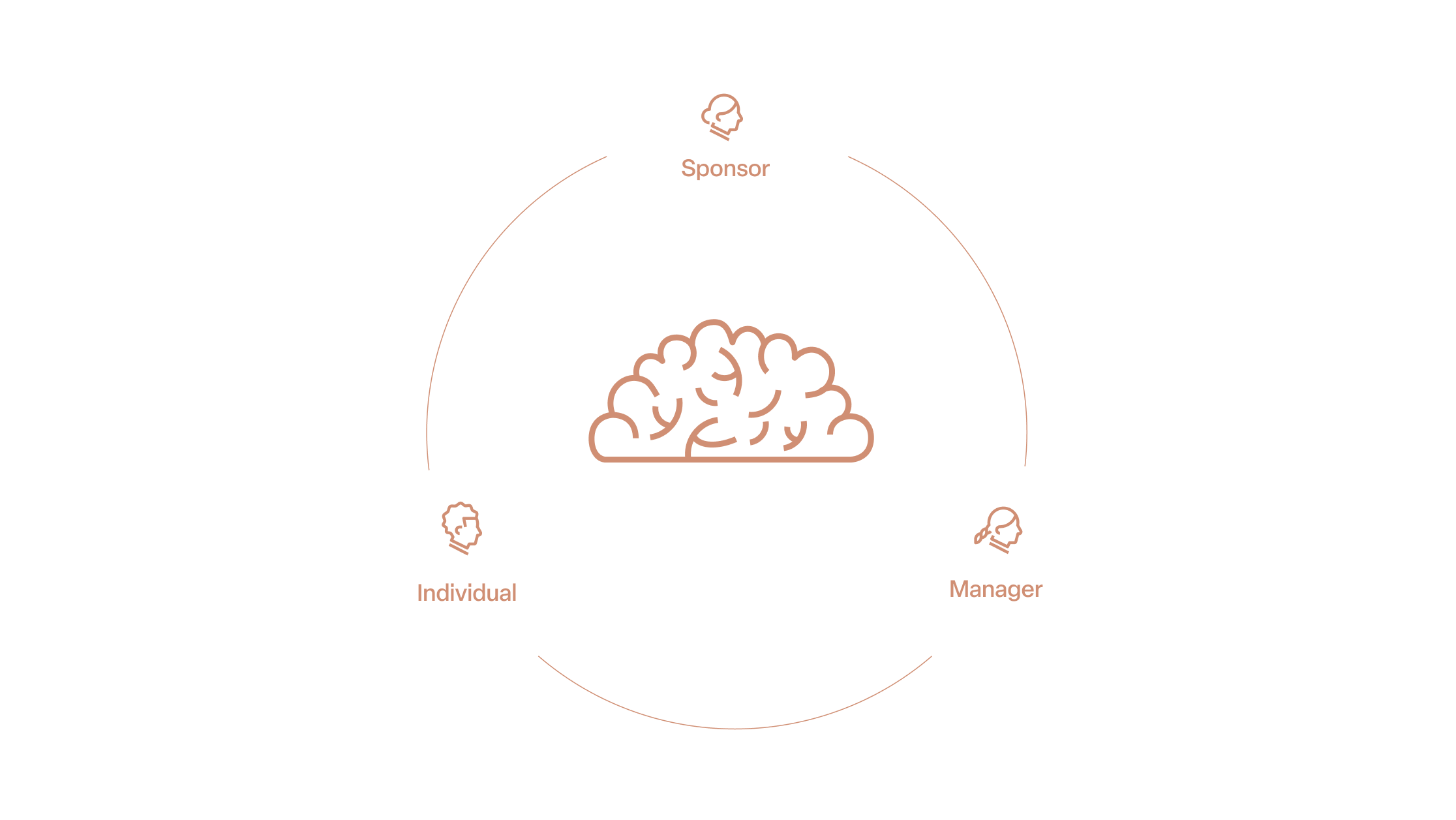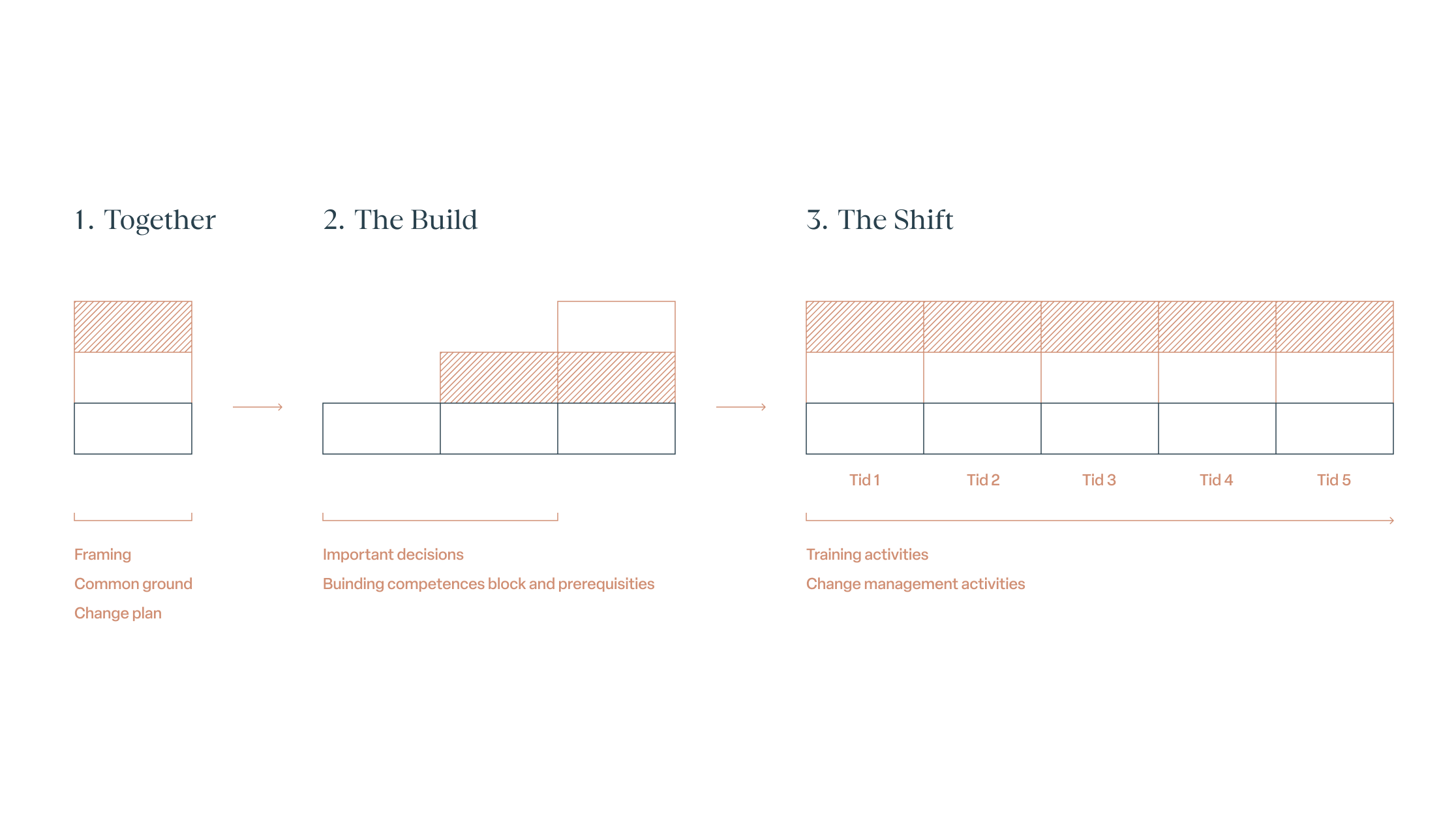How to truly engage employees in change

To get 4500 employees to start using the same collaboration platform is no easy task! Especially when all the tools are completely new to at least half of the employees. This was accomplished by first finding the strongest wills in the organization and getting them to agree on a common goal. Also, together they created a roll-out approach, initially involving all managers, and subsequently, all employees, depending on their role, individual interest, and engagement.
The main reason for the success of this major change project was the involvement of three core roles: The Sponsor, the closest Manager, and the Individual.
This is the story of how Qinshift helped out in identifying the problem and together with the client created a solution involving the entire organization.
Identifying the problem
The organization decided to implement Microsoft Teams to increase communication between individuals and the different functions within the organization. A year later, a large part of the organization with 4500 employees still hadn't started to use this new collaboration tool even though they had access to it.
An internal team was created to try to identify the problem and find a potential solution. A Qinshift team was brought in to facilitate the process and support the internal team in defining the problem and creating an organizational wide plan that would make everyone wanting to use Teams.
Creating "the itch"
Employee engagement is a buzzword in today's professional landscape but to move from theory to actual employee engagement in real life requires some very specific actions. Each person must find motivation through a proven structured approach.
Enter the Qinshift mind-shift model — a comprehensive approach supporting real-life employee engagement, not just advocating it. We need to create genuine employee involvement which is crucial for driving any successful organizational change.
Management often articulates the necessity of employee engagement but rarely succeed, primarily due to their exclusion of their employees from the process. This disconnection makes it very hard to translate their intentions into actual employee involvement.
Research from Prosci©* shows that including change management in various projects greatly increases the chances of achieving or exceeding project goals within budget limits. This data reinforces the critical synergy between effective change management and successful project outcomes.
*Reference: (Prosci Inc., Reinforcing and Sustaining Change Outcomes)
The core recipe for making employee engagement a reality lies in concentrating on the three key roles: The sponsor, the closest manager, and the individual. This triad forms the backbone of fostering genuine engagement within an organizational framework.
Crucially, achieving employee engagement mandates dedicated change management initiatives with separate funding. This allocation ensures that the resources necessary for cultivating a culture of engagement are neither overshadowed nor compromised by competing priorities.
At the heart of this transformative approach is the Qinshift Employee mind-shift model, designed to comprehensively address all facets essential for ensuring employee engagement spans the entire organizational spectrum. This model emerges as a blueprint, integrating seamlessly with organizational dynamics to usher in a shift towards authentic employee involvement and commitment.
We keep repeating that success requires engagement from our employees.
Still, we make sure to keep them out of the loop when introducing new systems and organizational changes. We believe that it’s better not to interrupt team members in their daily work since we have already figured out what the organization needs. And we will make sure to send them a link to the online training when we go live, right?
The challenge:
For some reason, we humans don't like change. When we've learned something, we prefer to stick to the same routine because altering our habits seems complicated. We fear making mistakes and attracting unwanted attention, which we tend to avoid! Numerous factors contribute to employees resisting change, often tied to personal experiences and how it impacts their team dynamics.
Creating change:
To truly enact change within an organization, we must involve all individuals. The challenge lies in individuals consistently finding excuses to resist change.
How can we create change that involves everyone?
Using the "Qinshift Employee Mindshift" model is a proven way for effecting genuine change by engaging all employees in the process.
At Qinshift, change management seamlessly integrates into all our client projects. We merge real-life project experiences with formal change management frameworks like ADKAR from Prosci©**. Studies demonstrate that incorporating change management into various projects increases the likelihood of meeting or exceeding project objectives and sustaining change. A strong emphasis on change management results in up to four times higher sustainment.
**Reference: (Prosci Inc., Reinforcing and Sustaining Change Outcomes)
Who plays a crucial part in the journey to change?
Sustainable change revolves around three primary roles: The Sponsor, the closest Manager, and the Individual.

The Sponsor defines the long-term goal and actively communicates with all employees through all-hands meetings, encouraging the management team to support the initiative in their daily operations.
The closest Manager plays an active role in the change process by integrating new processes into the team's workflow. Changes are collaboratively implemented with team members to ensure understanding. The Manager, responsible for deciding when each employee attends training and its duration, also participates in training sessions to comprehend how new tools benefit their team.
The Individual decides the extent of their involvement in the change process, beyond basic training, through discussions with their closest manager. Achieving real change requires self-leadership, with employees taking personal responsibility. The Employee Mindshift model aims to support individuals in this change journey.
The Qinshift mind-shift model:
The model comprises three stages: "Together," "The Build," and "The Shift."

A model in three steps for implementing new ways of working focusing on the employee’s individual journey.
Together:
The initial stage is about aligning everyone's understanding. Identifying the main stakeholders and defining the scope and boundaries of change is critical. Internal subject experts are identified to form a common ground, agreeing on the initiative's direction based on diverse views.
Qinshift's role is to help identify the right people and create an environment for drafting the Change Plan, the recipe for the entire change. The output from this stage is a documented scope and a recommended plan for continued work.
The Build:
This stage creates the prerequisites and artifacts needed for the shift. A common understanding among affected managers is crucial, formalizing the project organization and creating detailed plans for each change project step.
To ensure individual participation, a compelling "story" is required, detailed in a communications plan that outlines expectations for each role. A training plan, covering technical aspects and all-hands meetings with the sponsor, is developed. Sessions with the local team and the closest manager create individual engagement.
The Shift:
The organization executes the change management project, supported by Qinshift. Change activities follow the adapted change plan. Qinshift facilitates and coaches all-hands and smaller meetings, workshops, and various training sessions. Unique experiences and clever change hoaxes spice up the process. Managers play a crucial role, with support provided for leadership and change management specifics.
Truly Engaging Employees:
Engaging employees is no easy task, yet it is crucial for organizational transformation. Despite understanding the need for individual involvement, most organizations budget only for the technical aspects, given the difficulty of measuring engagement levels.
Taking our word for it, running a separate change management project using the Employee Mindshift approach will ignite your change project. This launch ensures employees step out of their comfort zone, practicing self-leadership and enhancing the organization's ability to achieve project goals, adhere to budgets, and realize long-term visions.
For more information, contact Stefan Hult, Senior Business Consultant, at stefan.hult@qinshift.com.
